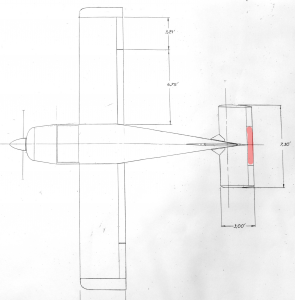Several of you have told me how much you are enjoying these postings, and you have been encouraging me to keep building and keep writing. Thank you very much. Believe me, I appreciate all of the positive energy you are sending my way!
Almost all of you have been completely lost about what the heck an “anti-servo tab” and a “horizontal stabilator” are, where these beasts go on the airplane, and what they do. When I write, “almost all of you,” I mean all of you who are not pilots. So if you do not know what these terms mean, you are in very good company. If I use other obtuse terms in the future, feel free to ask me to explain.
First a diagram showing where these things go on the plane. Click on this diagram (and any of the pictures further down) to see it larger.

The horizontal part of the tail of most planes is composed of two pieces: the “horizontal stabilizer,” which does not move, and the “elevator” which hinges up and down, making the airplane pitch nose up or nose down. On the Bede BD-4C, the entire horizontal tail surface moves; none of it is stationary. Consequently, it is called a “horizontal stabilator.”
The center section of the very back edge of the stabilator, just 42″ x 6″, is a movable tab which helps even out the amount of force needed to move the control stick in the cockpit. Normal trim tabs, on airplanes which have horizontal stabilizers and elevators, move in the opposite direction of the elevator. When the elevator moves up, the trim tab hinges down. On airplanes with horizontal stabilators, like the BD-4C, the tab moves in the same direction as the stabilator. When the stabilator moves up, the trim tab moves up even more. As such, it is called an “anti-servo tab,” since it moves opposite to the direction of a normal trim tab.
Diagrams are nice but photographs help me visualize things better, since I get a better sense of scale. Here I am holding the horizontal stabilator in its approximate position at the back of the fuselage.

From the side, you can see how wide the stabilator is, even without the anti-servo tab on the back. (Robin Hood, as always, fails to understand what this fuss about flying is all about.)

The stabilator is 84″ wide. The anti-servo tab takes up the middle 42″ and attaches to the top skin. It can hinge up, like this

and hinge down, like this

Since the anti-servo tab is only 42″ wide, the outer 21″ on both ends of the stabilator are filled with a static (non-moving) section of skin, something like this

The anti-servo tab will attach to the horizontal stabilator with a length of piano hinge. I have spent the last couple of evenings trimming the piano hinge to size and preparing the stabilator, drilling out some rivets which are in the way of the assembly that I need to do next. Nothing exciting enough to warrant a picture. When I attach the static sections of skin and the piano hinge, I will install fresh rivets in the holes, where I removed the rivets tonight.
